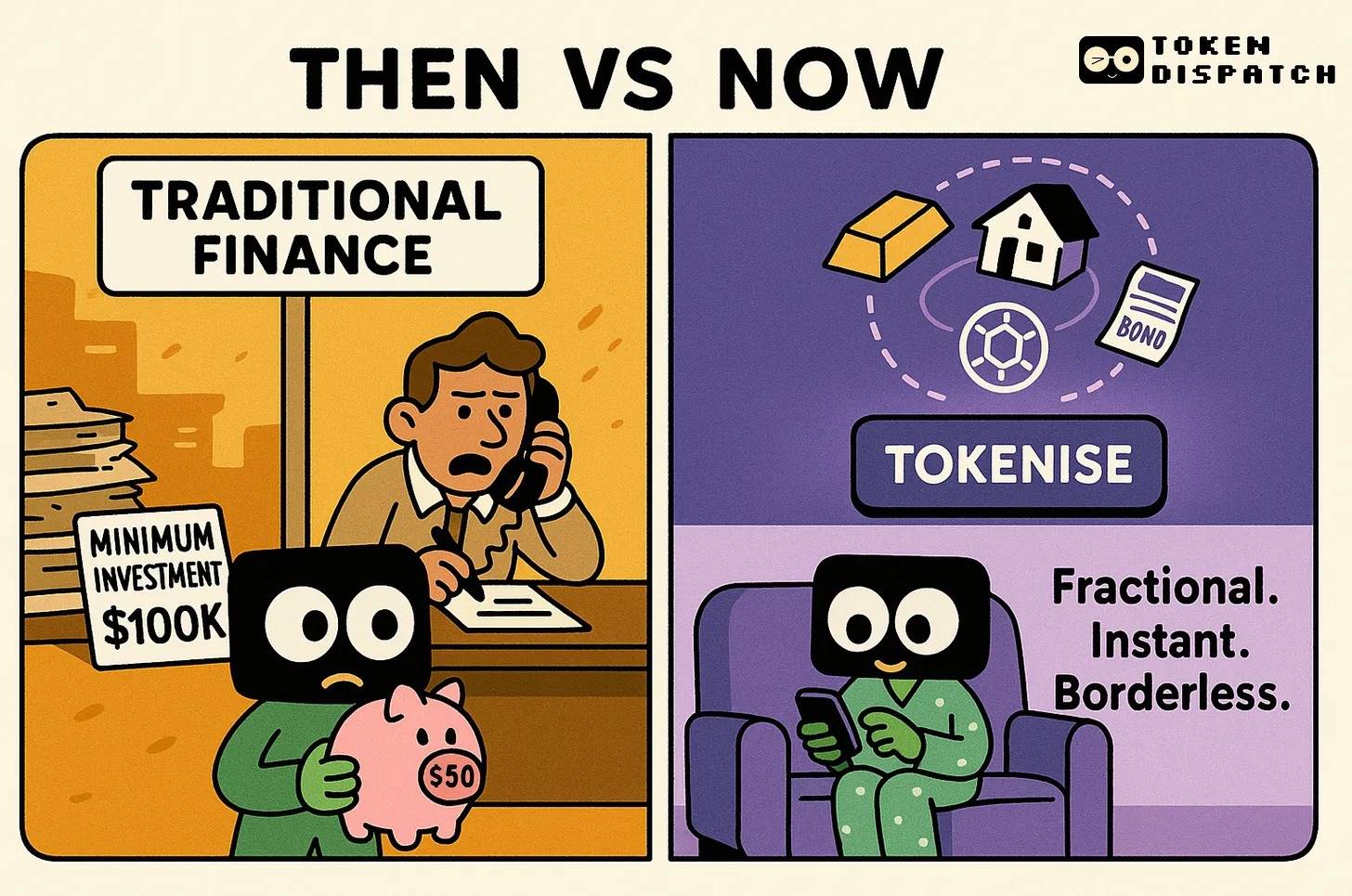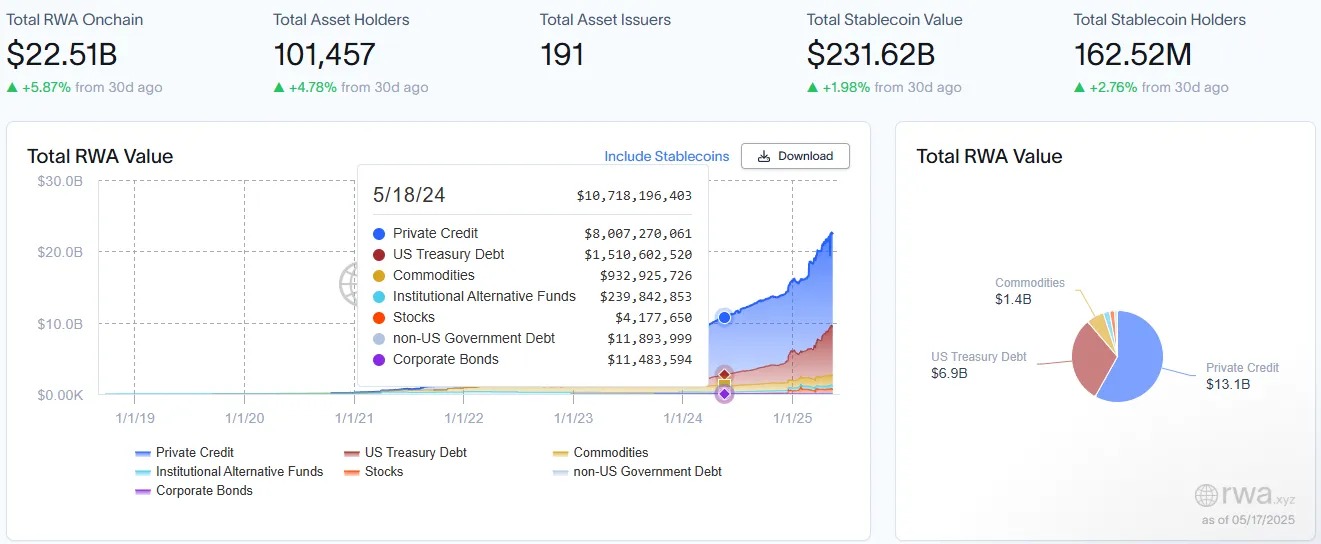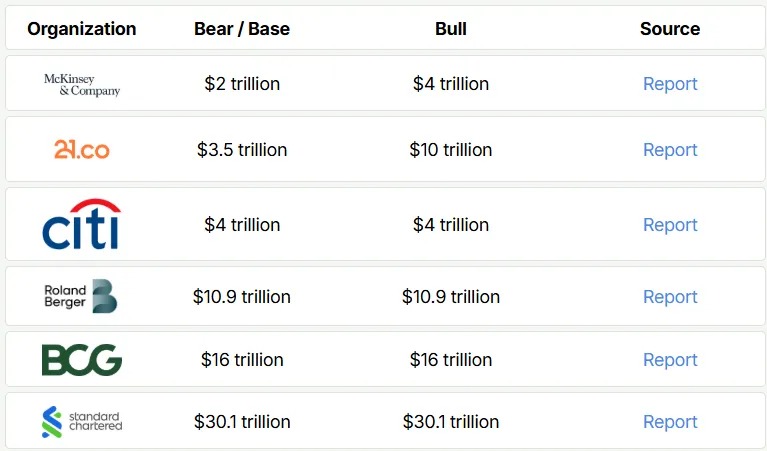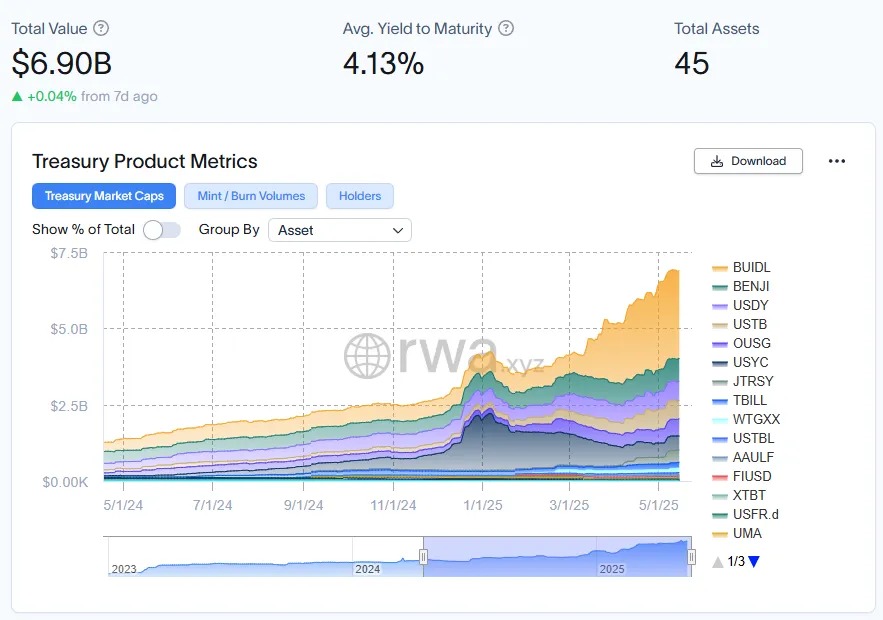As Wall Street giants rapidly expand their deployment scale, tokenization is thriving.
Written by: Token Dispatch, Prathik Desai
Translated by: Block unicorn

Introduction
As Wall Street giants rapidly expand their deployment scale, tokenization is thriving, a concept that was merely in the testing phase a few years ago.
Multiple financial giants are simultaneously launching platforms, building infrastructure, and creating products that connect traditional markets with blockchain technology.
Just last week, BlackRock, VanEck, and JP Morgan made significant moves indicating that the tokenization of real-world assets has surpassed proof of concept and become a cornerstone of institutional strategy.
In today’s article, we will show you why the long-awaited turning point for tokenization may have arrived, and why this is still important even if you have never purchased cryptocurrency.
Trillion-Dollar Potential
"Every stock, every bond, every fund—every type of asset—can be tokenized. If realized, it will fundamentally change investing," said Larry Fink, CEO and Chairman of BlackRock, in his annual letter to investors in 2025.
Fink is referring to an opportunity that allows fund companies to tokenize assets worth over a trillion dollars in the global asset industry.
Traditional financial giants have seized this opportunity, with adoption rates surging in the past 12 months.
The tokenized real-world assets (RWA, excluding stablecoins) have exceeded $22 billion, growing 40% just this year. However, this is just the tip of the iceberg.

Consulting firm Roland Berger predicts that by 2030, the tokenized RWA market will reach $10 trillion, while the Boston Consulting Group estimates it to be $16.1 trillion.
To put it into perspective, even at the lower estimate, this means a 500-fold increase from today. If 5% of global financial assets move on-chain, we are discussing a multi-trillion-dollar transformation.

Before exploring the tokenization initiatives of fund companies, let’s first understand what tokenization is and what it means for investors.
The Combination of Physical Assets and Blockchain
Three simple steps: choose a real-world asset, create a digital token representing ownership (part or whole) of that asset, and make it tradable on the blockchain. That is tokenization.
The asset itself (government bonds, real estate, stocks) does not change. What changes is how ownership is recorded and traded.
Why tokenize? Four key advantages:
Fractional ownership: Own a part of a commercial building for just $100 instead of needing millions.
24/7 trading: No need to wait for the market to open or settle.
Lower costs: Fewer intermediaries mean lower fees.
Global access: Investment opportunities that were previously geographically restricted are now accessible worldwide.
"If SWIFT is the postal service, then tokenization is the email itself—assets can bypass intermediaries and transfer directly and instantly," Fink stated in the letter.
A Silent Revolution
BlackRock's tokenized government bond fund BUIDL has surged to $2.87 billion, growing more than fourfold just in 2025. Franklin Templeton's BENJI holds over $750 million. JP Morgan's latest initiative connects its private blockchain Kinexys with the public blockchain world.
The value of tokenized U.S. Treasury bonds has now approached $7 billion, a significant increase from less than $2 billion a year ago, further confirming this growth story.

More and more giant companies are joining this trend with unique products.
This week, VanEck launched a tokenized U.S. Treasury bond fund accessible on four blockchains, intensifying competition in the rapidly expanding on-chain real-world asset (RWA) market.
Earlier this month, the world's largest financial derivatives institution, Dubai-based MultiBank Group, signed a $3 billion tokenization agreement for real-world assets (RWA) with UAE-based real estate giant MAG and blockchain infrastructure provider Mavryk.
Smaller countries are also joining the ranks. According to the Bangkok Post, the Thai government is offering bonds to retail investors through tokenization, lowering the entry threshold from the traditional $1,000 to $3.
Even government agencies are not missing out on this revolution.
The U.S. Securities and Exchange Commission (SEC) recently held a roundtable with nine financial giants to discuss the future of tokenization, a stark contrast to the attitudes of previous administrations.
For investors, this means 24/7 access, near-instant settlement, and fractional ownership.
Think of it as the difference between buying a whole album on CD and just streaming the songs you want to hear. Tokenization breaks assets into affordable small pieces, making them accessible to everyone.
Why is this happening now?
Regulatory clarity: Under President Donald Trump, the government shifted from enforcement to promoting innovation, with several cryptocurrency supporters leading government agencies.
Institutional adoption: Traditional financial giants provide legitimacy and infrastructure support for tokenization.
Technological maturity: Blockchain platforms have evolved to meet institutional needs.
Market demand: Investors are seeking more efficient and accessible financial products.
SEC Chairman Paul Atkins views tokenization as a natural evolution of financial markets, likening it to "the transition from analog vinyl records to tapes to digital software decades ago."
The Road Ahead
Despite strong momentum, challenges remain.
Regulatory fragmentation: The global regulatory landscape is still not unified. The SEC's roundtable shows an open attitude in the U.S., but there is insufficient international coordination. Japan, Singapore, and the EU are advancing at different speeds, with incompatible frameworks posing compliance challenges for global tokenization platforms.
Lack of standardization: The industry lacks unified technical standards for tokenization across different asset classes. Should tokenized government bonds on Ethereum be compatible with those on Solana? Who verifies the connection between tokens and underlying assets? Without standardization, isolated liquidity pools may form instead of a unified market.
Custody and security concerns: Traditional institutions remain cautious about blockchain security. Earlier this year, the $1.4 billion Bybit hack raised tricky questions about immutability versus recoverability.
Market education gap: While Wall Street may be accelerating, the general public still has a widespread lack of understanding of tokenization.
Our Perspective
Tokenization could be the bridge connecting blockchain technology with mainstream finance. For those following the evolution of blockchain, this may be the most significant impact in the field to date—not creating new currencies, but changing how we access and trade existing assets.
Most people do not care about blockchain. They care about getting paid earlier, accessing investment opportunities previously reserved for the wealthy, and not being squeezed by high fees when transferring funds. Tokenization offers these benefits without requiring users to understand the underlying technology.
As this field develops, tokenization may become "invisible infrastructure"—just as you don’t think about the SMTP protocol when sending an email. You will be able to access investments more easily, with lower costs and fewer restrictions.
Traditional finance has spent centuries developing systems that benefit institutions while excluding ordinary people. For decades, we have accepted a financial system designed around institutional convenience rather than human experience. Want to trade after work? Sorry, you can’t. Have only $50 to invest? Not worth our attention. Want to make an international transfer without losing 7% in fees? Then just wait.
Tokenization could break this inequality in just a few years.
As the tokenization experience becomes more widespread, the conceptual barriers between "traditional finance" and "decentralized finance" will naturally dissolve. A person who buys a tokenized bond from the Thai government for $3 may later explore DeFi protocols that can generate returns. Institutional investors who first encounter blockchain through BlackRock's BUIDL may eventually invest in native crypto assets.
This model drives real applications, not through ideological shifts, but through practical advantages, making the old ways seem extremely inefficient by comparison.
免责声明:本文章仅代表作者个人观点,不代表本平台的立场和观点。本文章仅供信息分享,不构成对任何人的任何投资建议。用户与作者之间的任何争议,与本平台无关。如网页中刊载的文章或图片涉及侵权,请提供相关的权利证明和身份证明发送邮件到support@aicoin.com,本平台相关工作人员将会进行核查。




